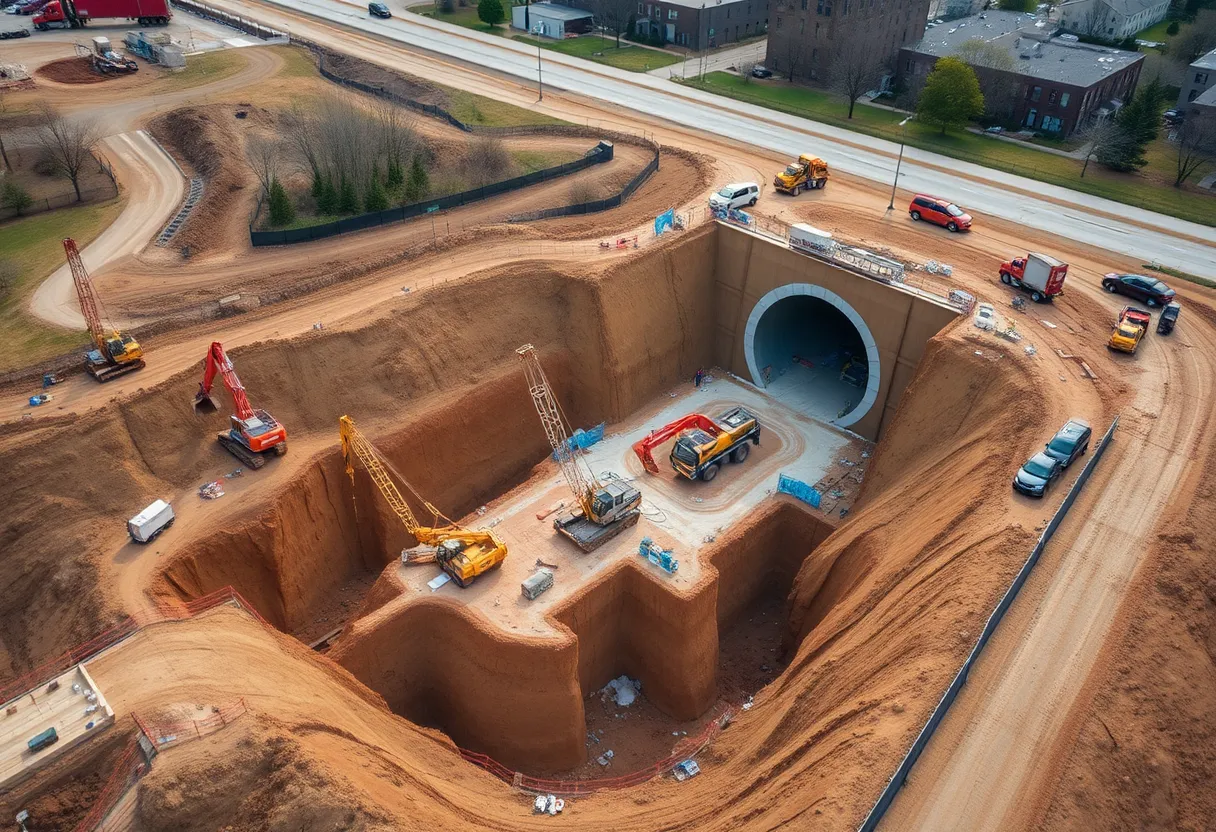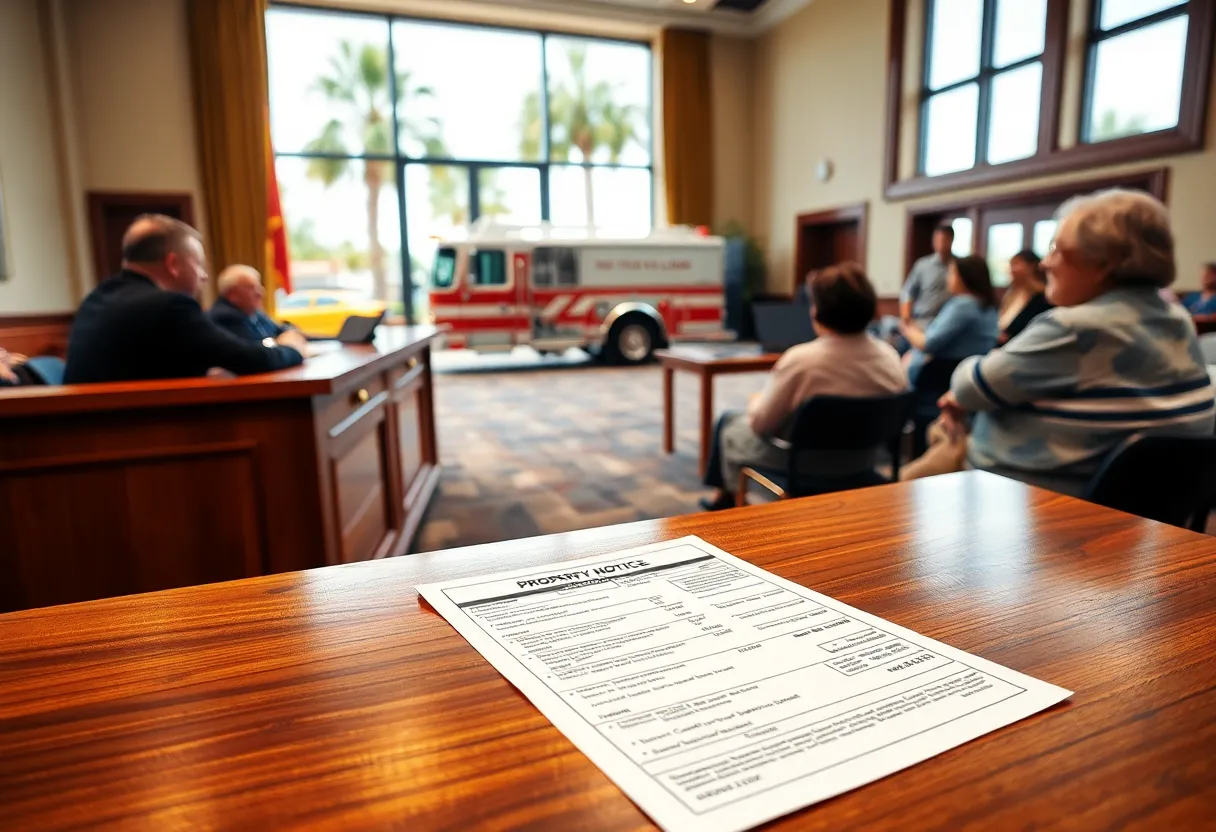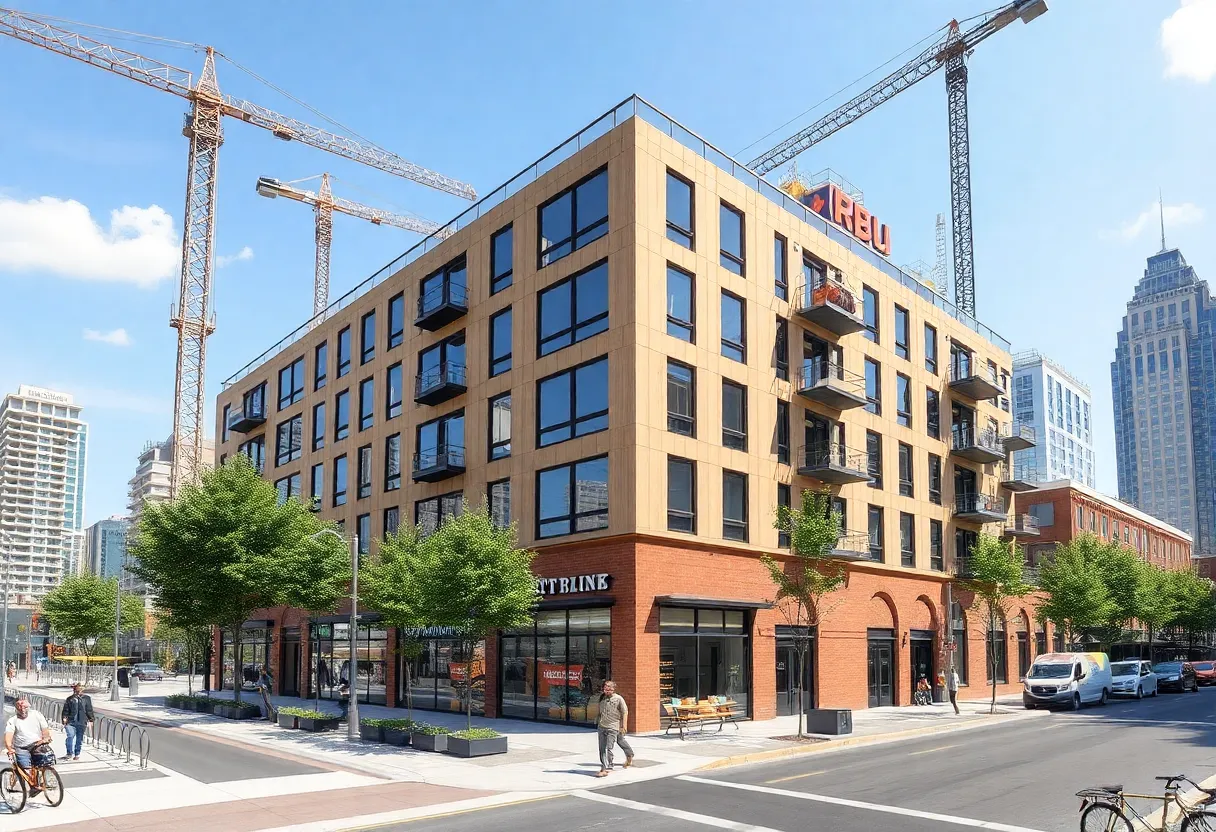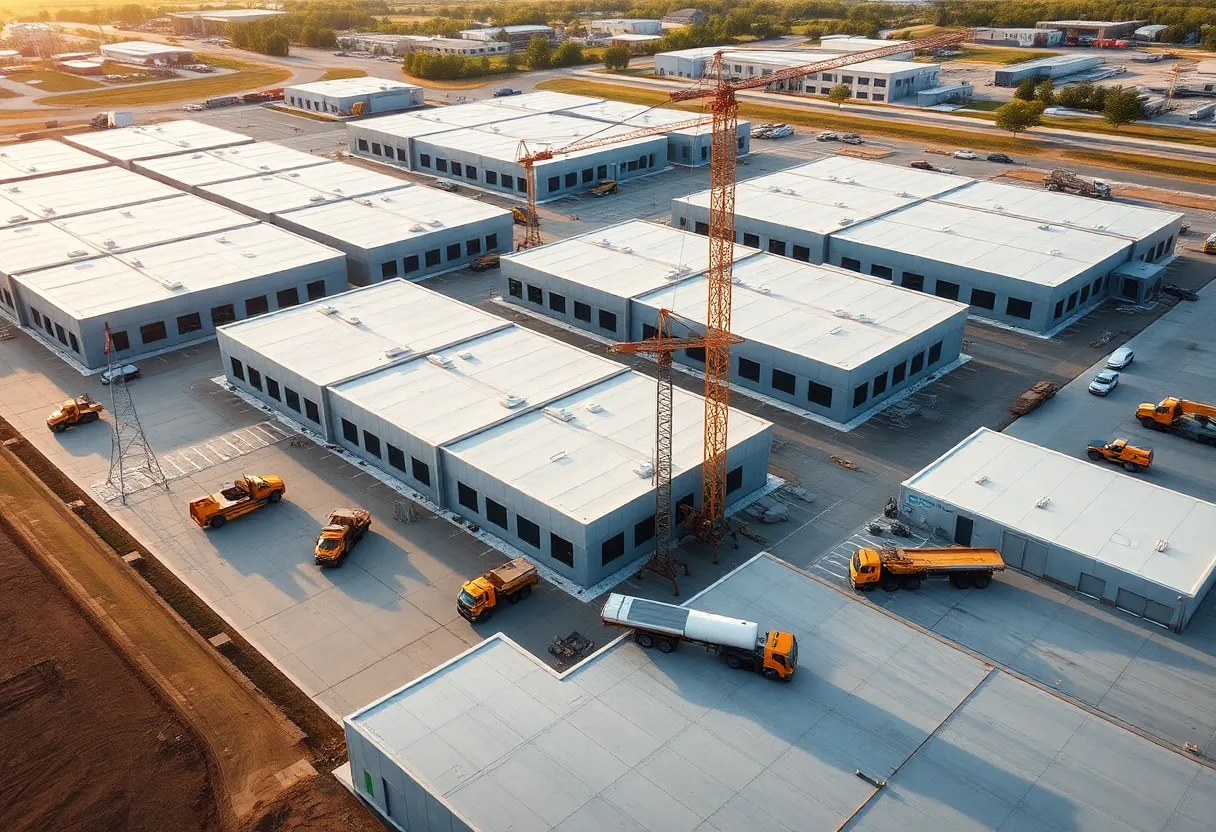Nashville, August 14, 2025
News Summary
The Boring Company has begun construction on a high-speed tunnel project that will connect downtown Nashville to the Nashville International Airport. The excavation started at a state-owned lot, and the project aims to improve transport efficiency for residents and visitors. With a focus on zero emissions, the privately funded venture is set to open its first section by 2027, following thorough geological assessments and community engagement efforts.
The Boring Company Starts Construction on Nashville’s High-Speed Tunnel Project Connecting Downtown to Airport
The project in Nashville has moved from planning to the initial on-site work as the Boring Company began excavation for a high-speed transit tunnel intended to connect downtown Nashville to the Nashville International Airport. The initial work is taking place on a state-owned parking lot at 637 Rosa L. Parks Blvd, marking the first physical step in what promoters describe as a privately funded system designed to speed travel across the city.
Officials say the move to bore beyond the current site will require additional approvals from state and federal authorities. For now, the early activity is focused on setting up the work zone, with fences and equipment on site before formal outbound approvals have been granted. The state has taken a formal step to secure the project’s footprint by granting a rent-free lease that lasts through 2027, with a stipulation that the parking lot be returned in the same or a better condition than at the lease’s start. The lease also preserves the state’s right to terminate if construction progress stalls.
On the ground, workers have established the site boundary, and there are visible preparations such as equipment and fences. A three layers of fencing surround the excavation area to prevent public access. While progress continues near the parking lot, the site has not yet shown the proprietary boring machine Prufrock, which is the company’s main piece of boring equipment.
Route map, stations, and current status
A draft map released by the company outlines a proposed tunnel path beginning at the Tennessee State Capitol and running along Rosa L. Parks Boulevard, then 8th Avenue South, Music City Center, Lafayette Street, Murfreesboro Pike, to the airport. Specific locations for the airport and Capitol stations have not been confirmed. The Convention Center Authority has not yet voted on a proposed station at Music City Center, though members are generally supportive.
Passengers are envisioned boarding a Tesla Model X or Model Y at designated stations and traveling to their chosen stop in under 10 minutes. The system is designed to offer a very short wait time for boarding and alighting, with an estimated 10 seconds for passenger in-and-out processes. Pricing for the Music City Loop has not been established, but officials say it could be similar to the Las Vegas Loop, where rides have been quoted in a range of roughly $4 to $12.
Funding, safety, and environmental design
The project is described as privately funded and is claimed to produce zero emissions once operational, with no taxpayer dollars expected to cover construction or ongoing operation. Construction of the actual tunnels is expected to begin in the last quarter of 2025, pending design completion and permitting approvals, with the first section anticipated to open in 2027. The plan calls for twin tunnels running about 30 feet underground to avoid existing utility lines and to minimize surface disruption, with major stops evaluated along the route.
Safety features are included to meet National Fire Protection Association standards, including gas and smoke detection systems, a fire suppression system, and ventilation systems. The design is intended to be watertight, with management systems for potential water ingress, including elevated stations and high-power sump pumps. The company states it is addressing concerns about Nashville’s hard limestone and geological stability by pointing to equipment capable of handling such conditions.
The company emphasizes transparency, planning to hold public meetings and maintain a dedicated email for community questions. A letter from Metro Nashville officials to the company listed more than 70 questions covering emergency access, profit projections, and environmental studies. The response from the company has not appeared directly in public statements yet. Questions about transparency and the planning surrounding the project’s announcement prompted additional details to appear on the company’s website.
Administrative steps and ongoing oversight
Beyond the construction fence, the agreement to use the parking lot includes a lease through 2027, with the state retaining the right to terminate the lease if progress does not continue. Commission members noted that it is common practice for initial site preparation, including equipment setup and fencing, to occur before formal lease approval. The excavation near the parking lot is currently the most visible sign of activity, with the excavated hole roughly the width of four standard parking spaces and the site surrounded by multiple layers of fencing to prevent casual access.
The project is marketed as a path to faster regional travel with a focus on reducing surface traffic and offering a high-capacity link between central Nashville and the airport. Advocates underscore the privately funded model and the potential for high-speed shuttle-like service, while observers watch how permitting, station siting, and environmental reviews evolve in the coming months.
Frequently asked questions
The goal is to create a privately funded, high-speed transit tunnel that connects downtown Nashville to the airport, using twin tunnels to offer rapid travel with limited surface disruption.
Initial excavation began on a state-owned parking lot at a specific city address along Rosa L. Parks Boulevard, with the site fenced and prepared for future tunneling activity.
Construction of the tunnels is anticipated to start in late 2025, with the first section opening by 2027, subject to design and permitting outcomes.
The project is described as privately funded, with no taxpayer dollars allocated for construction or operation; pricing for trips is not yet set but is expected to be similar to other private loop systems in similar markets.
Safety features include gas and smoke detection, a fire suppression system, ventilation, and measures to keep water ingress under control, designed to meet NFPA standards.
A dedicated email channel exists for community questions, and public meetings are planned to discuss progress, design, and impacts as the project moves forward.
Key features at a glance
| Feature | Details |
|---|---|
| Route start | Capitol to Airport route, via Rosa L. Parks Blvd, 8th Avenue S, Music City Center, Lafayette Street, and Murfreesboro Pike |
| Tunnels | Twin tunnels planned, located about 30 feet underground to avoid utilities |
| Stations | Capitol and airport stations confirmed; others like Music City Center are under review |
| Timeline | On-site work beginning now; tunnel construction expected to start late 2025, with first section opening by 2027 |
| Operations | Passenger vehicles would be Tesla Model X or Y; under 10 minutes travel time between stops |
| Cost model | Privately funded; no taxpayer dollars; ride pricing not yet set but expected to align with other private loops |
| Safety and design | NFPA-standard safety systems, gas and smoke detection, fire suppression, ventilation, and water ingress management |
| Public engagement | Public meetings planned; dedicated email for questions; company has published additional information online |
Deeper Dive: News & Info About This Topic
Additional Resources
- Fox17 News
- Wikipedia: Nashville
- Tennessean
- Google Search: Boring Company Nashville
- News Channel 5
- Google Scholar: Nashville high-speed tunnel
- Nashville Post
- Encyclopedia Britannica: Nashville
- WKRN News
- Google News: Nashville tunnel construction





